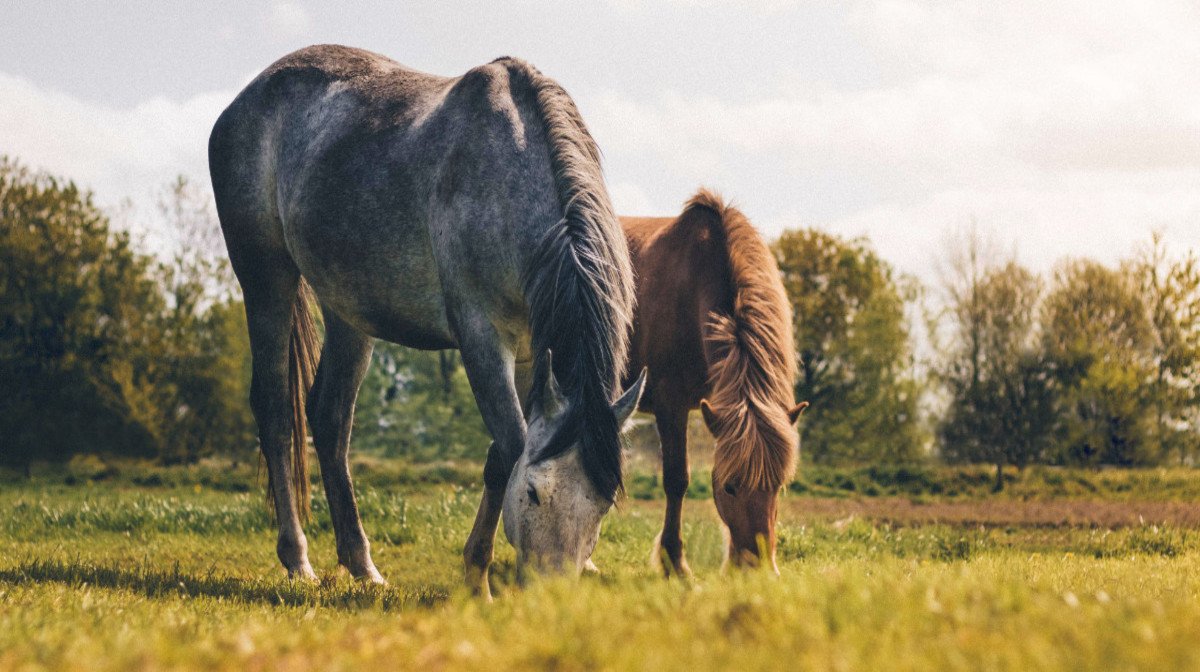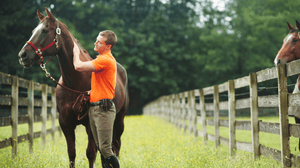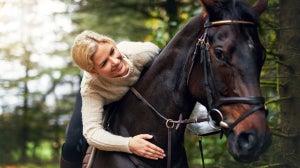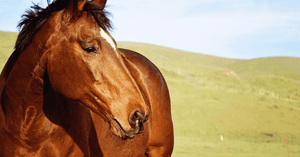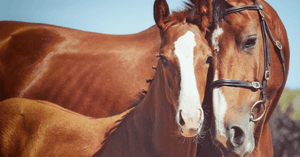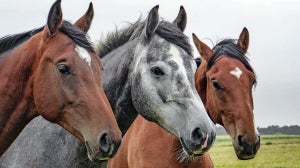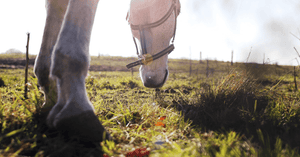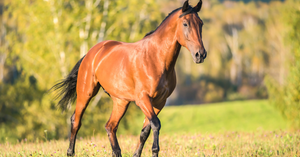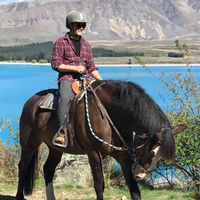
When summer arrives, this can bring a lot of benefits and enjoyment for both rider and horse.
However, with the warmer weather comes an increased risk of dehydration and heat exhaustion for horses unless steps are taken to keep them cool or ensure that they do not overheat.
Horses will likely be outside for hours during the day when the sun is shining and temperatures increase, and so they’re even more prone to feeling the heat.
As a result, it is important for horse owners and caretakers to be aware of the signs and symptoms of heatstroke and know how to prevent it. Read our handy guide on heatstroke in horses to ensure your horse keeps healthy and safe during these hotter months.
What is heatstroke
Causes of heatstroke in horses
Signs and symptoms of heatstroke in horses
Preventing heatstroke and treatment
Conclusion
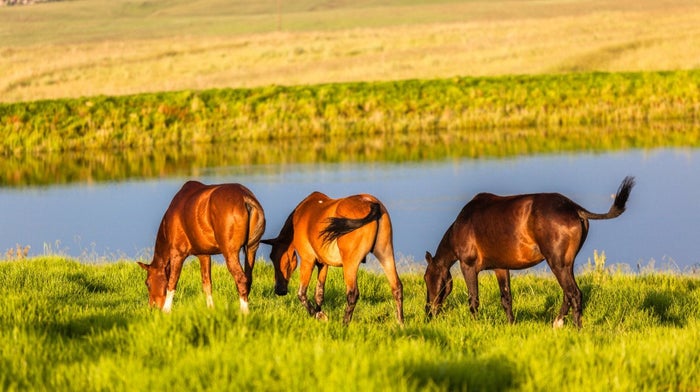
What is heatstroke?
Heatstroke is a condition in which the body's temperature rises above the normal range and cannot be regulated. This can lead to organ damage, brain damage, and even death. In horses, heatstroke can occur when they are exposed to high temperatures and humidity for an extended period of time, alongside other factors.
Horses generate a lot of heat during physical activity, and their bodies are designed to reduce this heat through sweating. However, when the temperature becomes too high, or when a horse has exercised excessively without rest and hydration, their body may not be able to cool itself effectively, and heatstroke can occur.
What can cause heatstroke in horses?
Heatstroke in horses occurs when a horse's body temperature rises to dangerous levels, typically above 40°C (104°F).
Several factors can contribute to the development of heatstroke in horses:
1. High temperatures: Exposure to excessive heat and humidity, especially during hot summer months, can overwhelm a horse's natural cooling mechanisms. When the external temperature exceeds the horse's body temperature, or when there is high humidity, it becomes challenging for the horse to dissipate heat effectively.
2. Inadequate ventilation: Poor airflow in stables, trailers, or horseboxes can impede heat dissipation and increase the risk of heatstroke
3. Lack of shade or water: Insufficient access to shade and clean drinking water can exacerbate heat-related issues. Horses require shade to escape direct sunlight, and dehydration can impair their ability to regulate body temperature.
4. Strenuous exercise: Intense physical activity in hot weather without proper rest periods can cause a horse to overheat very quickly. Activities like long rides and training sessions in high temperatures increase the risk of heatstroke.
5. Obesity or poor fitness: Overweight or unfit horses can be more susceptible to heatstroke as they have a decreased capacity to reduce heat and may have underlying health issues that affect their body’s heat regulation.
6. Heavy coats or rugs: Horses with thick coats or those wearing rugs or stable blankets in warm weather are more prone to overheating. Insulation from excessive hair or improper rugging prevents heat loss and increases the risk of heatstroke.
7. Respiratory conditions: Horses with respiratory problems, such recurrent airway obstruction (RAO/COPD) or equine asthma, have compromised airways that limit their ability to cool down efficiently. These conditions can worsen in hot and humid environments, increasing the risk of heatstroke.
8. Stress from transport: Transporting horses in trailers or horseboxes, especially during hot weather, can lead to heat build-up and poor ventilation. Combined with the stress of transportation, this can increase the risk of heatstroke.
9. Age and health: Geriatric horses and those with medical conditions may have a poorer ability to regulate body temperature, making them more susceptible to heatstroke.
It is important for horse owners to be vigilant about heat-related risks, provide appropriate shelter, access to water, and avoid demanding activities in extreme weather conditions to help prevent heatstroke.
Signs and symptoms of heatstroke in horses
The signs and symptoms of heatstroke in horses can be subtle at first but can quickly escalate. Some of the early signs of heatstroke in horses include:
Rapid shallow breathing (‘panting’)
Heavy sweating
Increased body temperature (detectable with a rectal thermometer)
Muscle weakness and tremors
Lack of coordination
Dehydration
Loss of appetite
Increased heart rate
If left untreated, heatstroke can progress to more severe symptoms, including:
Collapse and inability to stand
Seizures
Coma
Death
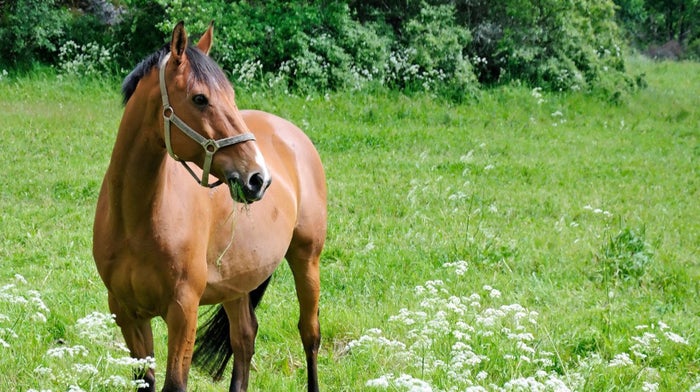
Preventing heatstroke and treatment
Preventing heatstroke in horses is essential for ensuring they remain fit and healthy. Here are several steps you can take to keep your horse safe in warmer weather:
1. Ensure there is adequate shade and ventilation
Horses need access to shade during hot weather, whether it's natural shade from trees or man-made shelters like stables or field shelters. Make sure that the shelter is well-ventilated to allow for air flow and to reduce a build-up of heat.
2. Provide access to water
Horses should have access to fresh, clean water at all times. In hot weather, they may need more water than usual, so make sure their water source is large enough to meet their needs.
3. Give electrolytes to help with rapid rehydration
Providing electrolytes like sodium, chloride, potassium, magnesium and calcium can be hugely beneficial in rehydrating your horse (as it cannot retain water without the presence of electrolytes). There are different electrolyte solutions on the market, so go with the one that’s most tried and tested with your horse. These may be provided wither in-feed or mixed with drinking water to form an isotonic solution.
4. Limit exercise during the hottest parts of the day
Avoid exercising your horse during the hottest parts of the day. Early morning or evening can be the best time for exercise when the temperature is cooler.
5. Gradually acclimate your horse to hot weather
Horses may need time to adjust to hot weather or high humidity. Gradually increase their exposure to the heat and monitor their behaviour and health. If you notice any signs of distress, remove them from the heat and cool them down appropriately.
6. Use fans and misters
Fans and misters can help keep horses cool by providing a breeze and reducing the temperature. Make sure the fan is placed in a safe location to prevent injury.
7. Use soaked hay and wet feeds
Your horse can hydrate from the food it eats. Using soaked hay and sloppy, wet feed is a great method for hydrating your horse if it’s feeling the heat.
8. Monitor the horse's temperature
Check the horse's rectal temperature every 5-10 minutes until their temperature begins to decrease. A horse's normal temperature is between 37.2-38.3°C (99-101°F).
9. Call your vet!
Heatstroke is a medical emergency, and it is essential to contact your veterinarian as soon as possible. Your vet can provide additional treatment and advice on how to manage the horse's condition.
Conclusion
Heatstroke is a very serious condition and one that all horse owners should be well aware of. Providing access to shade and water, limiting exercise during the hottest parts of the day, and using the other methods mentioned above can help keep your horse safe, healthy and happy.
If your horse shows signs of heatstroke, act quickly and follow the steps outlined above to provide immediate treatment.

